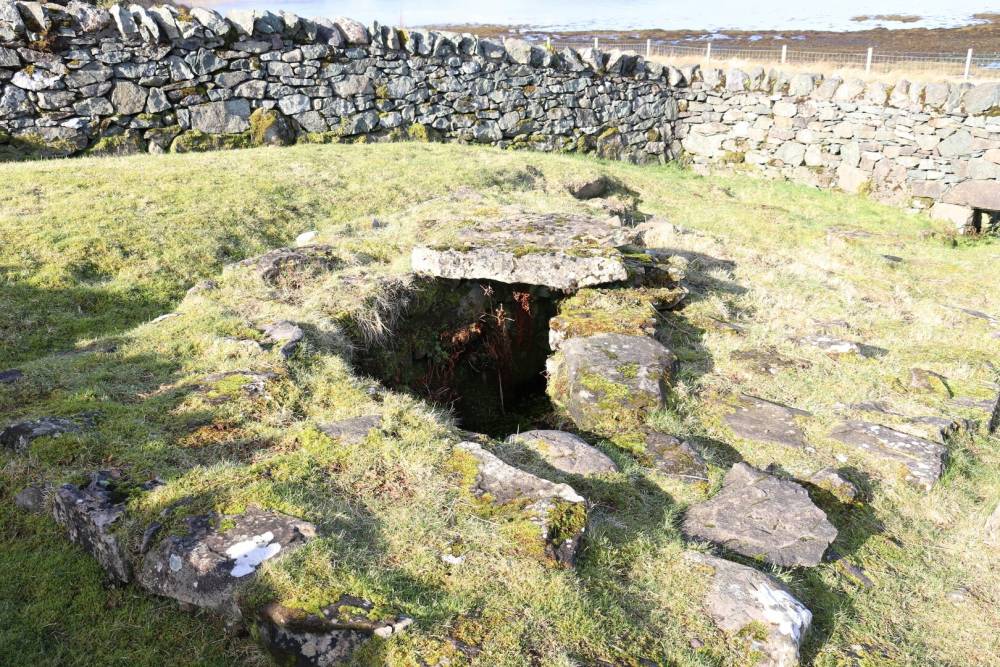The story of Aiseig Maolruibhe
John Nicolson
The story of Aiseig Maolruibhe
‘Aiseig Maolruibhe’, or Ashaig of Maol Rubha is an early Christian settlement. It dates back to times much earlier, to Neolithic or possibly even Mesolithic times.
Aiseig is Gaelic for ferry. In 673, it is said that St Maol Rubha ferried himself across from Applecross where he had established a church. Special weather was provided for him and, when he had no boat to cross to Skye, he sat on a stone in the water at the Applecross shore which immediately floated and brought him to Ashaig.
He had a cell in the old graveyard at Ashaig. The remains form a mound with a rectangular structure. Some stones of a wall were found during an excavation. The chapel probably had a corbelled roof.
In 1994, the site was excavated and an archaeological survey was undertaken. It was found that Tobar Aiseig, the well, was used for thousands of years perhaps as a healing well. A Neolithic stone axe was found in the well. and some pieces of iron and other artefacts. In Maol Rubha’s time, it was probably used as a baptismal well.
Down from the well is Pulpit Rock or Creag an Leabhair. It’s an overhanging rock. Maol Rubha preached from there to the people standing on the opposite side of the burn. The congregation would likely have been Picts. Eventually, all were converted to Christianity. Maol Rubha travelled widely and many place names are named after him.
Legend has it that Maol Rubha had a bell that was hung on a nearby tree that rang of its own accord.
As told by Seonachan MacLeod, resident of Lower Breakish
More information on visiting the area can be found here.
A film about this site has been made by one of the project story gatherers, Iseabail Strachan, which you can watch here.
